Monday’s grand final match in the $US10 million Dota 2 tournament, The International 4, was so lop-sided — so shocking — that forum conspiracy theorists briefly postulated that the contest must have been rigged. No way, of course. I can explain what happened: why one team was able to crush the other so convincingly and why the changes developer Valve has made to Dota 2 in the past year deserve some of the blame for the International 4’s disappointing final clash.
But back to those wild theories first, since they illustrate just how shocking the match was.
How, people asked, would the winning team, NewBee, have the strength to thoroughly squash Vici Gaming given that Vici had been working its way through the lower bracket of the tournament with riveting match after riveting match?
Why would Vici, who had made short work of American favourite Evil Geniuses, have conceded three games in a row to NewBee so quickly?
How could the finals fall so flat and fail to live up to the expectations of last year’s chaotic finals between Na’Vi and Alliance?
Occam’s Razor gives us our answer about what happened in the grand finals: NewBee simply outplayed Vici.
Professional matches of Dota 2 are played in Captain’s Mode. This means that the captain of each team picks which heroes their team will play from a large pool of possible characters, as well as banning heroes to block the other team from using them. Both teams will use their heroes to push their way through a map, killing creeps, getting into skirmishes with their opponents, amassing gold for those kills, and destroying towers. When they finally push far enough across the map, they win the game by destroying the enemy team’s ‘ancient’, a large building in the center of their base.
Patch 6.81b of Dota 2 favours heavy early game aggression, whether it’s in the form of teams that can fight together early or those that can take towers quickly, creating a gold and map advantage for the rest of the team.
With the state of Dota 2 as it is, teams know whether the lineup of heroes they choose before a game will win much sooner than they have in the past. NewBee knew the metagame better, drafted better lineups, and had a better understanding of what they needed to do with their drafts.
Having forced their way to the top of the upper bracket after a lukewarm showing during the group stage of the tournament, NewBee had two whole days to observe the competition.
Vici had to play most of their hand in order to work their way back up to them (NewBee had already beaten Vici in the upper bracket earlier in the tournament).
In comparison, NewBee hadn’t played nearly as many games at the main event, which meant they could save any hidden drafts — any surprise line-ups — they may have had for the grand finals set.
With the way the winds of Dota were blowing, NewBee decided that their best bet was to strangle Vici before they could mount any sort of counteroffensive.
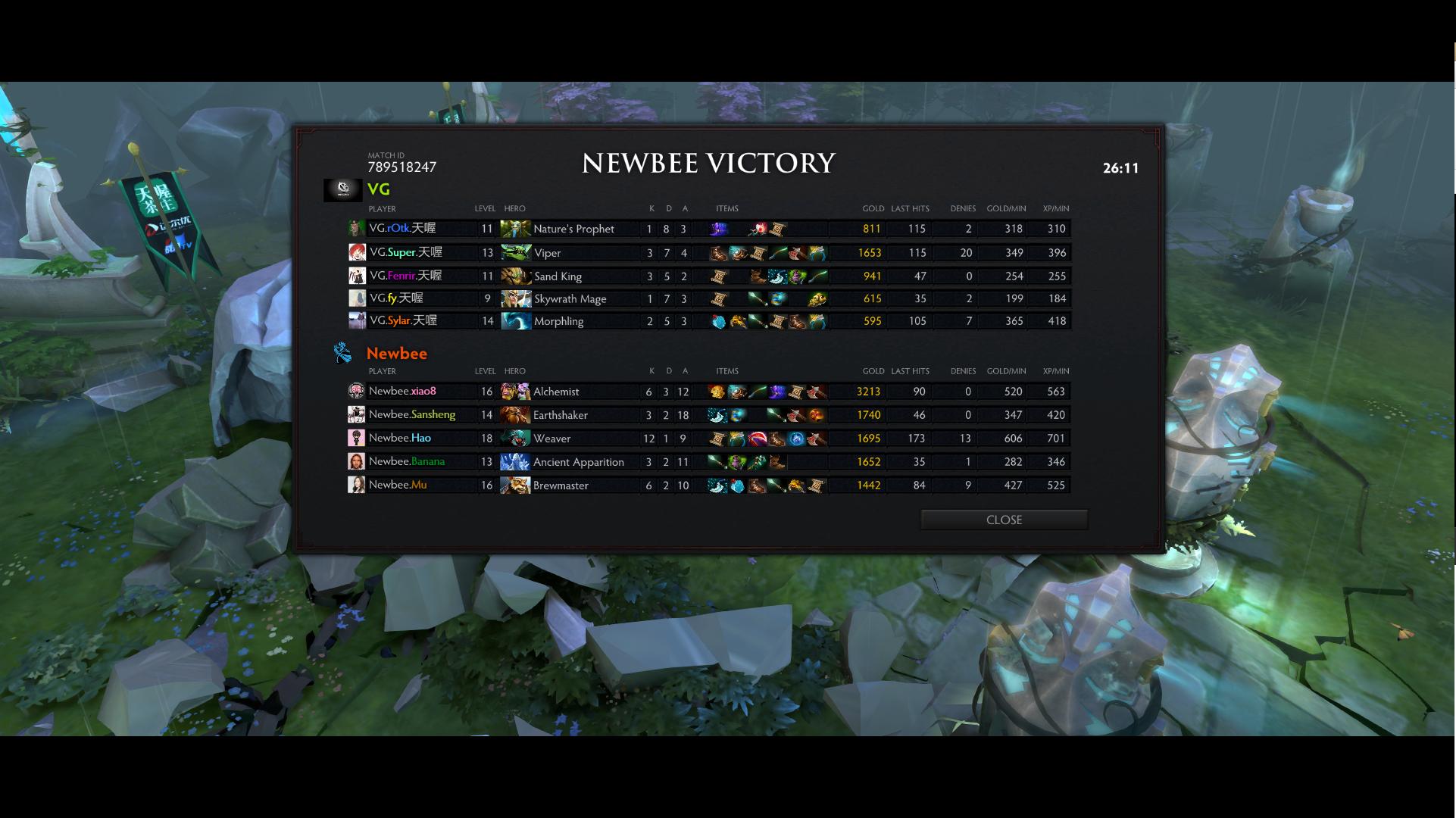
False Prophet
One of the keys to Vici’s success against Evil Geniuses earlier in the tournament was Jia Jun “Sylar” Liu’s use of Nature’s Prophet. EG had drafted a lineup oriented towards team fights, hoping to use heroes the likes of Enigma, Faceless Void, and Brewmaster to overwhelm Vici with an unstoppable death ball that beat the enemy team down and took towers.
Sylar’s Prophet had played around this strategy perfectly. He could teleport to any fight that may have been going on, or he could simply push down towers by himself. If EG didn’t win a fight, they could easily lose a tower. And if they did win, they could still lose a tower. This meant that, regardless of what EG did, they would risk losing control of the map, after which Vici would close its grip on them.
In the finals, Vici picked Nature’s Prophet first every chance they could, the only exception being game one, where NewBee had first pick. It seems, however, that both Vici and NewBee knew how to play around the sort of on-the-sly tower push that Prophet excels at. And though it may have been a simple coincidence, the team that drafted Prophet in this series always lost.
In game one (above), NewBee drafts Prophet, and Vici responds with a Shadow Shaman and Earthshaker combo. Both of Vivi’s picks can easily pick off a wayward Prophet, but are also proficient in pushing towers while keeping enemy pushes at bay. Patch 6.81b of Dota 2 favours heavy early game aggression, whether it’s in the form of teams that can fight together early or those that can take towers quickly, creating a gold and map advantage for the rest of the team. The rest of the draft shows this to be the case, save for the Lifestealer and Lone Druid, who usually favour longer games that allow them to amass the gold they need to become a real threat. The difference, however, is that Lone Druid is also good at doing what Prophet does — pushing towers while no one is looking. Both drafts are also set up to get early kills through lane rotations, though this usually requires a quick advantage in the laning phase of the game. Regardless of who won, these lineups ensured that we would get a relatively short game.
Prophet would go 0-4 throughout the entire series against the kind of lineups that both teams drafted, and that has to do with how aggressive teams need to be to win. They need to pick up kills early and snowball the momentum before the opponent has a chance to stop them. Prophet can help build that momentum, but if he fails, he’s not the best at playing defensively. He’s also relatively defenseless in lane, so if his team doesn’t build that advantage for him, he’s susceptible to being killed over and over.
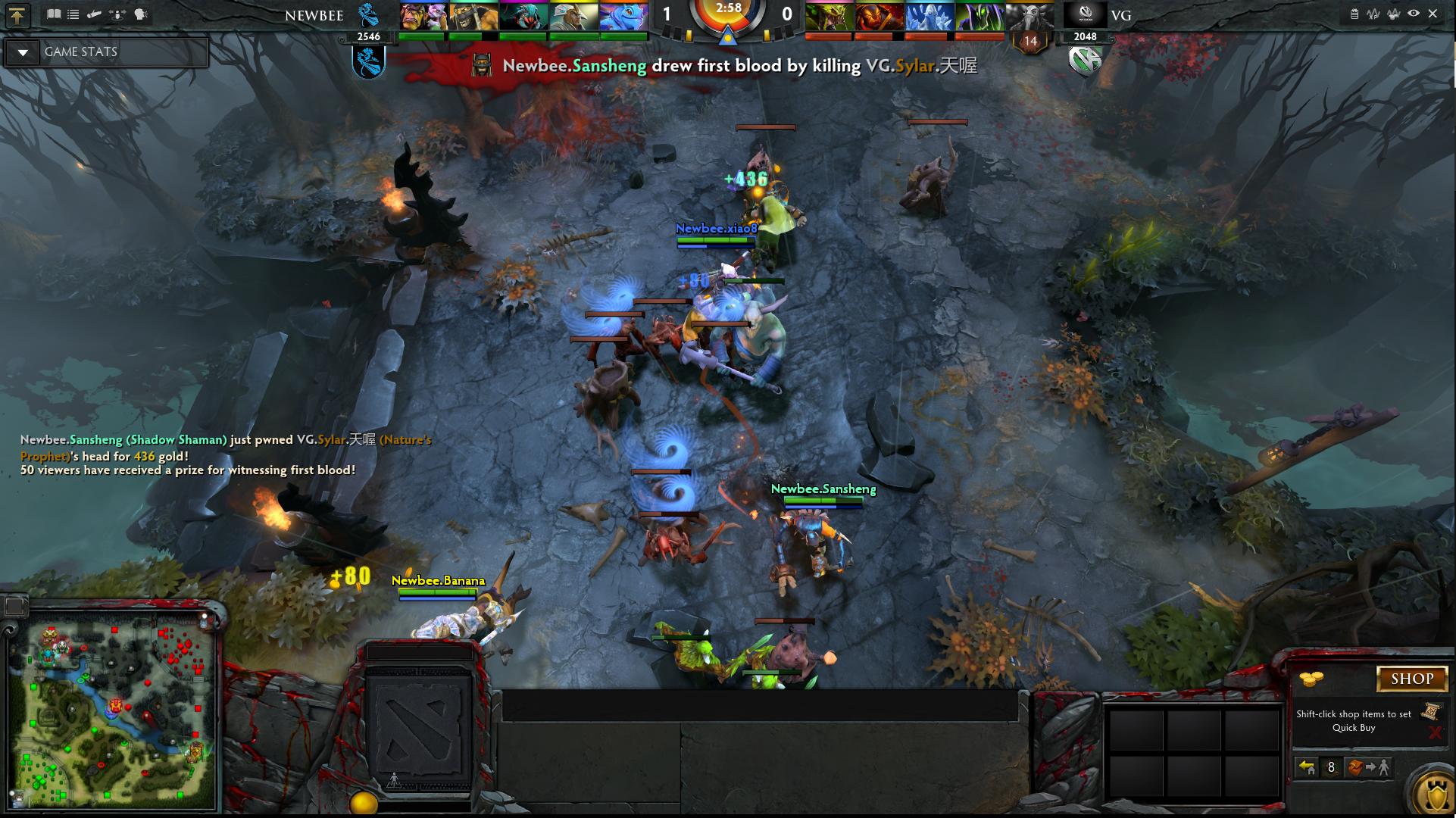
The Early Bird Special
Vici pick up their momentum from the get-go, getting first blood around the two-minute mark (13:50 in the video). The first blood bonus is small (only 200 gold), and though they trade a kill to get it, it’s more than worth it, since Lin Sen “Fy” Xu, playing Shadow Shaman, is able to buy the boots and teleport scroll he needs to rotate before dying, thus mitigating most the gold he would have lost. This small advantage is all Fy needs to begin making rotations (see: the immediate rotation to bottom lane that nets Vici a kill at 14:37 and another at 16:29). It also helps that Jun Hao “Super!” Xie, on the Brewmaster, is able to get two lane kills on Zhang “Mu” Pan’s Alchemist, a hero more inclined to be defensive until he can wear the enemy down with his acid and get a quick kill. At this point, Vici is able to turn the first blood gold and experience lead into a nearly 2000 gold/experience lead. Not insurmountable, but considerable.
This early advantage grows exponentially, as Vici turns one pickoff on Mu at 27:32 into one prolonged siege on two mid towers that also nets them four more kills. Meanwhile, Zhang “xiao8” Ning’s Prophet is pushing the top lane solo. Vici takes three more towers in the next five minutes without much contention from NewBee. This culminates in two consecutive fights near NewBee’s top barracks, and at this point, Vici’s considerable gold and experience lead means their beefy Brewmaster, Lone Druid, and Clockwerk are backed up by healing items like Mekansm that allow them to steamroll their way to a win. The Lone Druid still isn’t the scariest threat, but because of his ability to push towers and Vici’s overall teamfight potential, farming up gold isn’t as important when you can take a small lead and stretch it into a bigger one. Knowing that they won’t be able to take the late game because their lineup was built around dominating early, NewBee concede fairly quickly after losing only a single barracks.
Then the tables turn.
In game two (above), Vici drafts Prophet right away, and NewBee counters with Alchemist and Ancient Apparition, the same duo they had last game. This time, however, Shadow Shaman, who proved to be a thorn in xiao8’s side, is banned, along with Clockwerk. Vici decides on a Viper mid lane to fight Brewmaster’s aggression, but their lineup overall seems like a mix of push, teamfight, ganking, and farming, while it seems that NewBee is focused squarely on taking fights and letting the Weaver push lanes and amass gold slowly but surely.
Again we see that the first blood advantage opens all doors for lineups catered toward smothering the opposition. NewBee score a kill on Bai “rOtk” Fan’s Prophet, which again allows the support who gets the kill (this time it’s Zhaohui “SanSheng” Wang’s Earthshaker) to start roaming and look for kills while Vici attempt to catch up on gold. Vici tries to compensate by making a dangerous move on xiao8’s Alchemist, and with some reactionary teleportations from NewBee, they’re severely punished for it, losing three heroes in order to secure one. That solidified NewBee’s early lead at 16:31. Without a strong pushing lineup, they sit on that lead for a couple of minutes before deciding to commit to a tower. They’re much more adept at getting an advantage through kills than pushing towars, and they continue winning engagements, even if they end up losing towers during the fights.
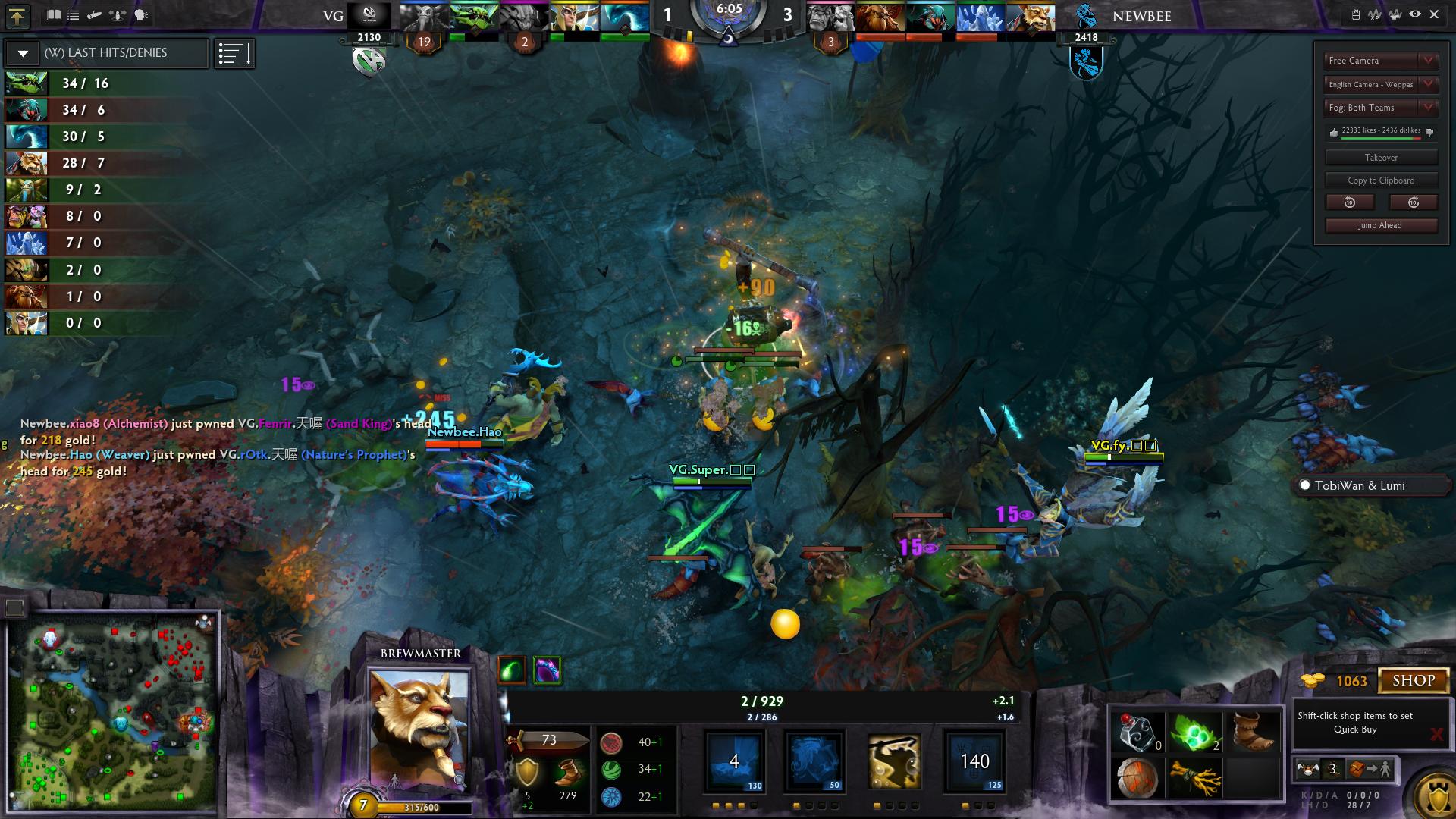
As they continue taking fights (especially the particularly disastrous fight for Vici near the Roshan pit at 29:34), they use their victories to finally get a couple of towers, backing off, healing up, and waiting for the next fight. Though it’s not as aggressive as what Vici did in the first game, the kills they’re getting are gaining them a huge gold and experience advantage. When they finally do siege a tower and take a fight at 36:05, Vici knows they’re not coming back in the late game. They concede without NewBee ever getting near their barracks.
From then on, it’s all Newbee. Vici’s drafts in games three and four (both above) share three heroes: Prophet, Venomancer, and Ancient Apparition, which again cater to combination of early tower push and lane combat. NewBee rely on their fighting potential to win them the day. They do add a few elements of push with the Shadow Shaman and Chen, but their play revolves around getting to fight early without needing much gold to do so. In both games, Sansheng’s Shaman gets first blood, and in both games this begins a death march by NewBee into Vici’s towers (now that NewBee finally has some strong pushers in their lineups). Both times, Vici concedes before the twenty-minute mark.
In a way, EG attempted to do the same thing to Vici that NewBee did — smothering the enemy with kill gold instead of taking towers — but they relied on teams that required more synchronisation between abilities. It didn’t pan out. Seeing Vici draft the same three-man combo in game four that failed in game three was a heartbreaking, desperate move.
Out of all four games of the finals, the second one was the most contentious. But even that game didn’t go past thirty minutes. Both teams seemed to know to give up the ghost before long, since neither team ever really drafted with the mindset of games going past a half hour.
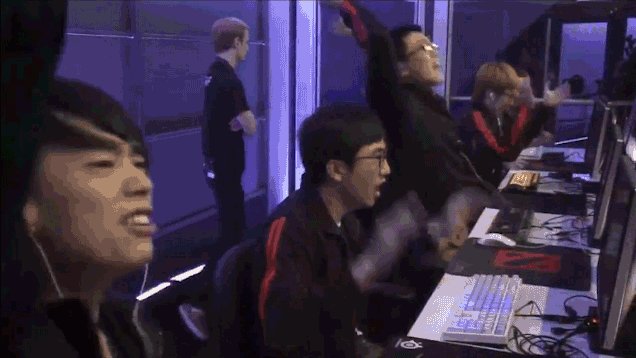
Pendulum Swings
Last year’s International featured a single game that went on for over ninety minutes. This year’s entire grand finals set barely went that long. So what happened in the course of the last year? Valve shook the game up, starting in October of last year. They changed where the creeps met (which increased the viability of certain heroes that tackle hard lanes solo). They changed where neutral enemies spawn (which made three-hero lanes less viable and supports more prone to roaming). They removed the mana cost from Blink Dagger (which is how heroes like Brewmaster and Earthshaker are able to get into position to pull off their abilities for best results). They increased the amount of gold that all players get per second.
All of these changes meant that support heroes such as Earthshaker and Shadow Shaman didn’t need as much gold from creeps in order to thrive. They did need to get early kills in order to make themselves useful. And because these early game heroes became more effective and subsequently en vogue, heroes that needed lots of gold to be viable fell out of favour. (There are exceptions. Heroes such as Tinker and Naga Siren are so good at getting gold they can get it from multiple sources at once while stalling defensively.)
These changes to how people play Dota 2 have resulted in games that go by faster than they used to, both on the professional scene and in your random pickup games online. It’s a bit like turning soccer into basketball, but not quite as drastic.
It should be noted that the grand finals set isn’t representative of the rest of the event — most other games went the average 30-40 minutes, and some did in fact go longer. But overall the game is getting faster, shifting toward a generally more viewer-friendly shorter length. Shorter games tend to be more action-packed, and more watchable as a result.
For this tournament, it seems that NewBee (and Vici, judging by their series beforehand) understood that the best lineups in this version of Dota 2 are those that don’t give the enemy any room to breathe. They knew that the best lineups to do that are those that dominate the early game but fall off towards the mid and late game. These lineups are also risky in that they heavily rely on momentum to get anything done. What ends up happening when both teams opt for these lineups, then, is that gaining momentum is so important as to be everything, and the team that gets it first usually ends up winning.
If Valve want to make next year’s finals as exciting as last year’s, however, they need to slow the game down a bit.
By attempting to make the game more watchable and faster-paced (assuming this has been Valve’s intent with recent patches), Valve may have swung the pendulum too far the other way, and the absolute stomps we saw on Monday are the result. That said, the hero variety has been somewhat higher relative to last year, and the change in practices has seen a lot of new heroes come to the fore.
In general, Dota 2 is in good place right now, but a game that changes this much this often is always in flux. For viewers, that’s generally a good thing. If Valve want to make next year’s finals as exciting as last year’s, however, they need to slow the game down a bit. They need to make late-game heroes a little more viable and buff the defensive lineups. Of course, I can say this as an armchair analyst. Getting that balance right for both viewers and players throughout multiple patches is nearly impossible. More than most developers of competitive games, Valve have proven time and again that they are more than capable of delivering on both ends.
Suriel Vazquez is a freelance games writer and critic based in Omaha, Nebraska who now has a lot of leftover chips after planning for a longer grand finals series. You can follow him @SurielVazquez.
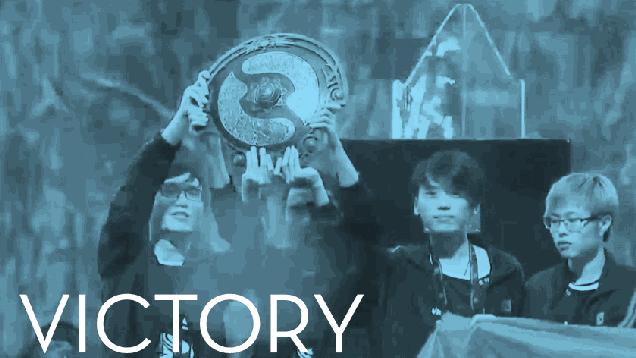
Comments
13 responses to “Why The Dota 2 International Finals Were A Blowout”
Wait, I’ve been saying that fast paced (or rather low killtime games) doesn’t make as interesting competitive games and was always met with hostility, now other people are saying the same?
People were fine with fast-paced games of Dota. What people didn’t like about The International Grand Finals were how one-sided they were. All four games were complete stomps where one team got a slight advantage and turns that into a very quick victory.
People didn’t like the old 4 protect 1 strats that lead to 80+ minute games as two teams avoided each other until their carries were so fat, Jenny Craig wouldn’t touch them. Then there was Rat Dota, where a team tries to chip away at towers while avoiding team fights. That wasn’t too popular either although game 5 of last year’s finals involved a very ratty draft from Alliance and that game was a classic.
Big plays are what get people excited. There aren’t really big plays involved in “they fought early and the team that lost the skirmish didn’t have a composition that could recover.”
Isn’t the problem with Dota games that they’re usually just one-side, or rather a snowball effect where once one side gets a lead it’s just a matter of time? I remember that being a main complain when this genre started taking off.
No.
In some of the later games in the International, LGD made one of the biggest comebacks in Dota history to beat DK. Before that, DK almost made a miracle comeback against another team (maybe Vici?) despite being confined to their base.
The reason pub games don’t have a surrender option is because comebacks are almost always possible and when they happen, they’re amazing. Comebacks in pub games are obviously harder because there’s less co-ordination to defend successfully against a team that’s ahead and there’s less team synergy.
It’s only really the super snowbally deathball line-ups that Newbee and Vici used in the Grand Finals that had this problem.
How often that initial snowball rolls into a stomp is often dependent on the skills of the team. If you have a team that can play well in the early/mid and to a lesser extant late then yeah they will, most of the time, stomp the other team, if they are better. If you have a team that plays well in the early game and kind of fall off in the mid to late game even if they get a snowball going the opponent can still get up on them in those later stages.
Isn’t it also a perception thing most people have seem to think is happening? I remember years ago people would complain about people in Dota quitting at the mid/late part of the game once the other team got a slight advantage as they thought the snowball was beginning.
Quitting sucks and yeah a single DC can pretty much over a game, but that isn’t the meta games fault. Not to mention rage quits are more a symptom of lower levels of the games and DOTA2 seems to have it under control from what I’ve seen, when you get to the higher levels people are a bit more stubborn and resilient.
That isn’t to say it doesn’t happen at all, it does, that can be seen in some of the lower stage matches of tI4, plenty of games were surrendered after T1 towers, but no matter how you change the meta to keep it balanced you have to make it winnable in the early game else there isn’t a point of early game champions.
The whole reason why Valve made the game more towards early/mid game was because games were taking too long and up to 90 minutes. It was the change that everyone wanted and been raging about it for ages and now they have it and saw the impact it has on the game, they start raging again.
This is why sometimes developer should just ignore raging fans, they know nothing about the game and just wanted to make it easier for them since it was “too hard”.
The real problem is that the shorter games are fun to play, but not as interesting to watch. I still enjoyed the final but you didn’t get to see a wider range of skill in play because it was all about ganks and then team fights.
It has nothing to do with it being “too hard”, it’s probably harder now really seeing as you cant rely on turtle tactics as much. It is all about time, the MOBA genre is facing the same issue as MMOs did after WoW burnt everyone out, people have less time to dedicate to playing MOBAs exclusively and want to get their fill in shorter time spans. Personally I only have about 3hrs to put into the game on nights I get to play and I get 3 games in on average, if it was at the old meta I might get in 2, maybe, and often probably not even.
True that it does give me more games for the time I have. I used to have epic moments for big turnarounds and such but lately not so much, the team that dominates the early game usually wins all the way.
The change that made me stopped playing dota 2.
I’m still in the lower tiers so complete roll overs don’t happen all that often unless someone DCs because most people are still learning and prone to mistakes that can turn the tide. I personally enjoy the shorter games much more and I can see how they are more friendly towards the lower bracket as early game mistakes dont get punished for another hour or longer.
The genre as a whole is going through a huge shift right now, much the way MMOs did but with the addition of having to become not only casual friendlier but also becoming more spectator friendly. It will be interesting to see where it goes.
Yep, this article does a good job explaining why,
http://www.gamasutra.com/view/news/38205/Opinion_Player_Metrics_Vs_The_Vocal_Minority.php
I’ve seen plenty of examples too. One that really annoys me was a title update for Halo: Reach that was mainly designed for people who didn’t play Reach and admitted to leaving Reach once Halo 4 comes out. Now, playlists with that TU are all but empty.
It sucks to have the bad minority voice be heard instead of the important one but what can we do, they are the people that have time and life to create a few hundred accounts to complain about something they don’t like.
Irrespective of the changes in 6.81, Vici had shitty drafts in game 3 and 4. Especially in game 4. Newbee 2nd picked Brewmaster and Doom was still in the pool after the second banning phase. Instead Vici picked up the Weaver 3rd pick and Sand king as their fourth pick. This let Newbee pick up Doom as a counter to weaver, whereas Vici should have third picked Doom to counter Brewmaster and 4th picked Weaver which was unlikely to have been picked according to Newbees draft. Essentially in games 3 and 4 it was clear that Vici was going to lose straight from the draft as they lacked disable, damage and crowd control that is so much more crucial now in 6.81 then in previous versions. That’s why this years grand final felt to deflating because there was no surprise factor, we knew the outcome before it happened.